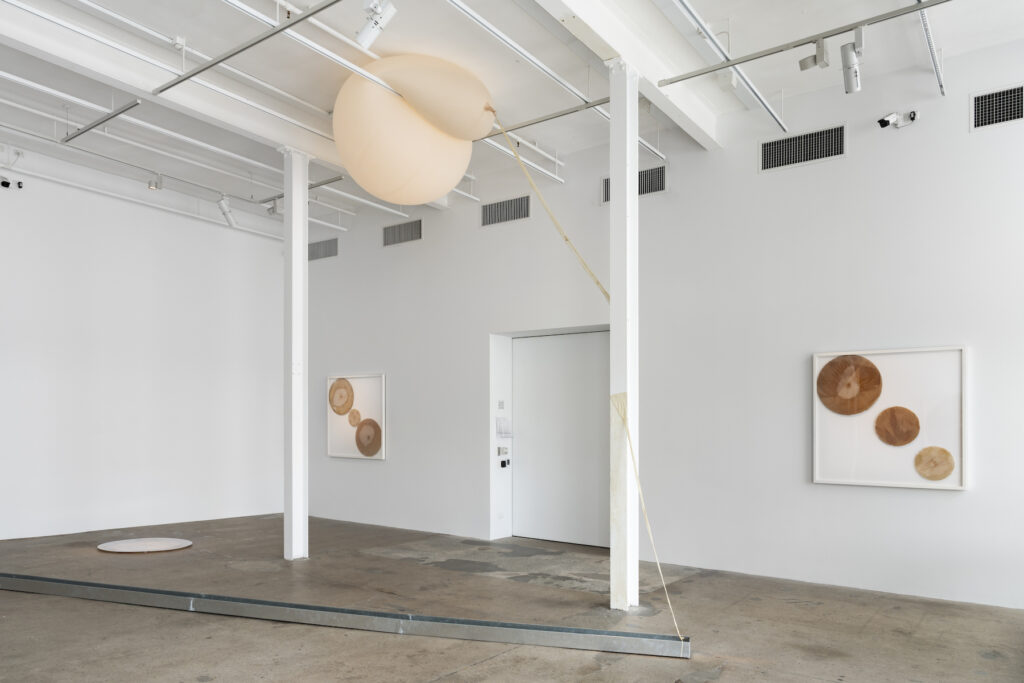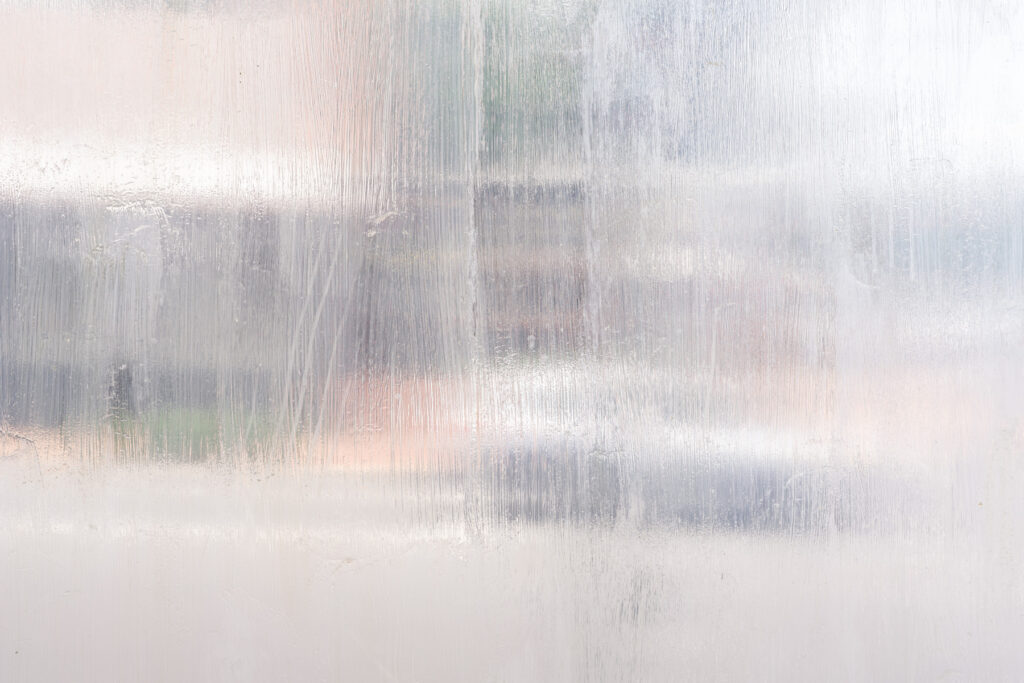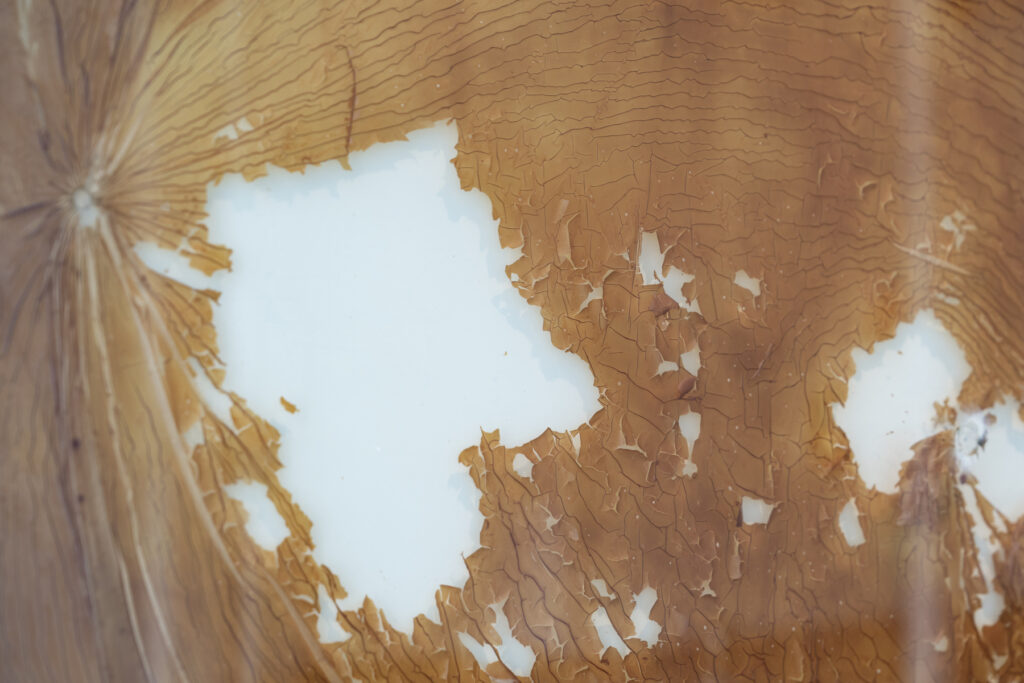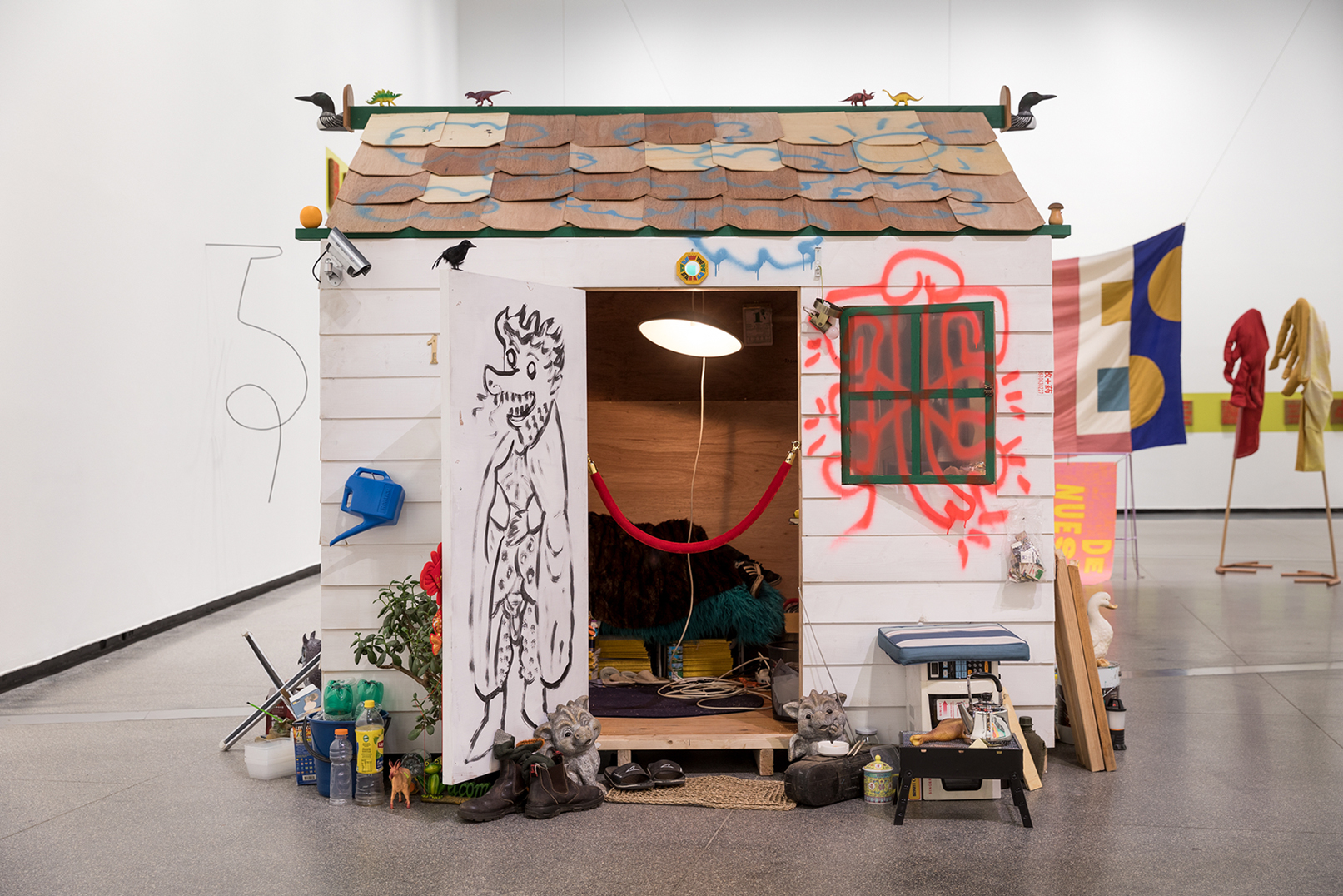
The new solo exhibition of Meanjin-based artist, Torin Francis, When do we look out, when do we look in?, investigates the material relations of atmospheres and the thresholds that separate them. This intention is communicated through the transitory forms of latex weather balloons, exhibited in varying stages of inflation, deflation, and decay. Weather balloons—a type of high-altitude balloon—are typically used to carry instruments of measurement into the stratosphere. Here the instruments record atmospheric conditions (such as air pressure, temperature, wind, and humidity) and send this information back to the ground. In Francis’ show, the discarded material bodies of weather balloons rest in purgatory; their fleshy forms, divorced from functional purpose, are reborn as sculptural assemblages.

Francis’ show highlights the physical action of threshold-crossing, in turn making audiences hyper-aware of the spaces that our bodies occupy. This is made clear by the artist’s decision to paint Outer Space’s floor-to-ceiling front windows with a thin layer of liquid latex, obscuring the work held within. These windows, a staple of the gallery’s architecture, are the first element of the gallery that street-goers interact with when passing the space. Curious eyes are usually invited freely into the gallery, allowed to roam the room’s contents without physically crossing the gallery’s doorstep. Francis’ alteration of the windows denies passers-by this casual, ocular entry; instead viewers are required to actively cross through the gallery doors to satisfy any interest.
This simple act of interrupting the clear view of the galleries’ windows draws attention to their significance as a marker between atmospheres. They are the line that demarcates the chaos of Brunswick Street from the climate-controlled environment of Outer Space. The exhibition’s title—when do we look out, when do we look in?—displayed on the clouded windows, reiterates the importance of temporality, location and direction in perception. Time is key to how we perceive spaces, and for the duration of Francis’ exhibition, viewers cannot approach the gallery as they usually would, unable to look out from or into the room.
Francis’ intervention also alerts us to the exclusion of the white cube gallery aesthetic, bringing to mind Brian O’Donahy and his renowned criticisms of the white cube:
“A gallery is constructed along laws as rigorous as those for building a medieval church. The outside world must not come in, so windows are usually sealed off . . . Unshadowed, white, clean, artificial—the space is devoted to the technology of esthetics.”1
The clouding of the windows emphasises a visceral boundary between outside and inside, attempting to protect the pristine inner sanctum from the anarchy that lies outside: life cannot look in, and art cannot look out. Once within the space, however, the sounds and blurred forms of streetlife permeate the barrier, perhaps acknowledging that atmospheres will always seep into each other, are never entirely separate. Art can never be independent from life.

Guarded by these enigmatic front windows, the skins of Francis’ grounded weather balloons fill Outer Space with a breath-catching minimalism. Along its left- and right-hand walls, deflated balloons are framed in perspex, each in a different state of frailty. The textured forms, although synthetic, are humanoid in their ageing states, displaying freckles, wrinkles, discolouration, and scars. They reflect the effects of weather, of atmosphere, on material bodies, whether human or human-made.
Along the floor, an unassuming metal trough breaks the room’s centre, filled with water dripping continuously from a dehumidifier. Walking through the space, this drip, drip, drip, (and the swooshing of cars outside) are the gallery’s only sounds. This water, we realise, is the product of our bodies. Our entering and exiting of the gallery atmosphere, via its two thresholds, disrupts its controlled inner climate. The room absorbs its audience, collecting our hushed breaths and condensing them, moving them gently to the metallic vessel that disturbs the empty floor space. This device draws attention to viewer’s bodies once again: not only must we be careful where we place our feet, but we are also shown the subtle changes to environments that our bodies affect. We are brought into an entangled embrace with the room’s atmosphere, and its artworks, through our sweat, breath, and whispers, forced to wonder what the moisture we emit will do to the skins of Francis’ dying balloons.
With an agile delicacy, Francis prompts us to think about time, space, and bodies within atmospheres, focusing on boundary crossings as a conduit for these enmeshed relationships. Once we enter the gallery space, stepping over that line of separation, we are materially tied to the balloons that inhabit the room: our skins, our breaths, our bodies, actively change the atmosphere they live in. Although the white cube attempts to contain and maintain an air of prestige, Francis’ show reveals that the grubbiness of life will continue to surpass its barriers. We become a chapter in the lifespan of the balloons, a point of contact that alters their rate of decay. Through this thought-provoking exhibition, Francis has displayed an astounding level of creativity, using the simple forms of weather balloons to explore the effects of material bodies on atmospheres, especially when thresholds are transgressed.
- Brian O’Donahy, Inside the White Cube: The Ideology of the Gallery Space. (Santa Monica and San Francisco: The Lapis Press, 1986), 15 (emphasis added). ↩︎
Sachi Orrock is an emerging arts worker, curator, and writer, living and working on unceded Jagera and Turrbal Country.



